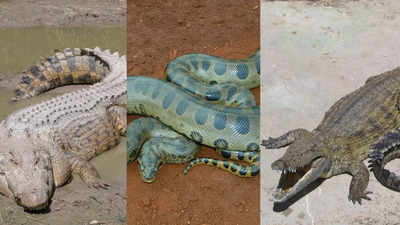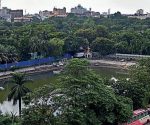7 largest reptiles on earth ‘six times’ larger than a human – from green anaconda to saltwater crocodile | – The Times of India

Reptiles are amongst the earliest living things on planet earth, and they lived millions of years ago. They have grown to extremely massive sizes, and their species are the strongest ever living things to have lived on the surface of the earth. Right from huge snakes and crocodiles to extremely large lizards and turtles, these reptiles leave human beings speechless in the habitat that they live in. Being scavengers, predators, or taking the middle path to contribute their share towards ecological equilibrium in the environment, they are members of the ecosystem.
For all their phenomenal capabilities otherwise, most such massive reptiles are attacked by diabolical foes such as global warming, pollution, loss of habitat, and poaching. Conservation efforts need to be undertaken to render them beneficial. There are seven of the largest reptiles in the world, each with an interesting adaptation and a very significant role to play in order to contribute to the environment.
Massive reptiles on the Earth
- Saltwater crocodile (Crocodylus porosus) | Length: 23 feet (7 meters) | Weight: over 2,200 pounds (1,000 kg) | Habitat: Southeast Asia, Australia, and surrounding regions
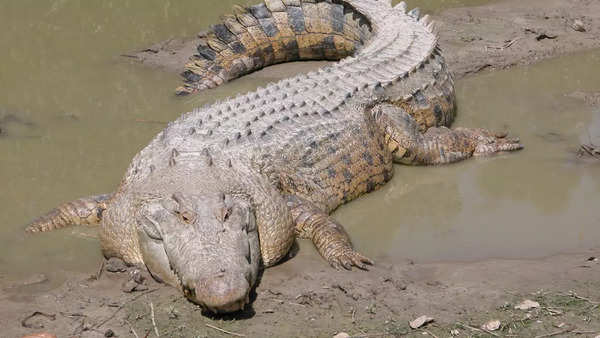
The saltwater crocodile, or “salty,” is the largest reptile to have ever lived and a vicious predator in their native habitat. They inhabit rivers, estuaries, and coastal waters and lie in wait to ambush their prey in the wide mouths of these behemoths. They are skilled swimmers and have been known to travel hundreds of miles across the ocean. Some of the largest “salties” ever recorded weighed more than 2,600 pounds (1,180 kg), an enormous reptile.
- Nile crocodile (Crocodylus niloticus) | Length: To 20 feet (6 meters) | Weight: 1,600 pounds (725 kg) : Habitat: Sub-Saharan Africa
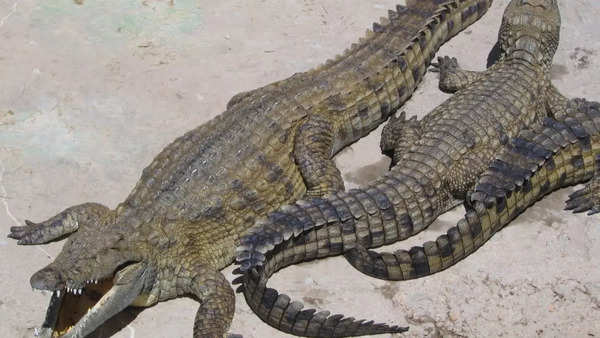
The Nile crocodile is the largest African reptile and a brute of sheer strength and ferocity. It is an apex predator found in rivers, lakes, and wetlands and consumes anything ranging from fish to large mammals such as zebras and buffalo. The Nile crocodile has one of the most powerful bites among any wild animal, and its ability to kill large prey ensures it is an effective predator in the wild.
- Green anaconda (Eunectes murinus) | Size: Up to 30 feet (9 meters) | Weight: more than 500 pounds (227 kg) |Habitat: South America (Amazon Rainforest, swamp, rivers)
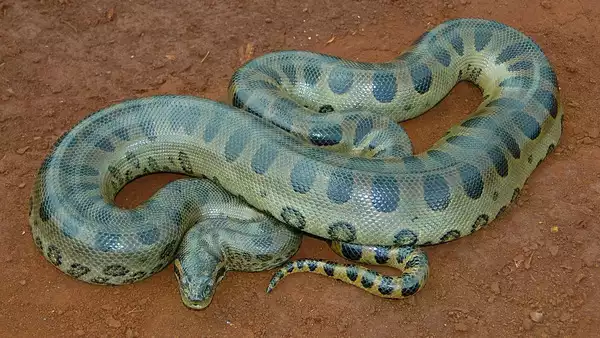
Anaconda is the largest snake in the world. Due to its massive body, it can strangle large animals such as deer, caimans, and even jaguars. Anacondas also constrict and swallow prey whole, in contrast to venomous snakes. As professional swimmers and half-aquatic creatures, anacondas use muscles to propel their body forward through Amazon rivers and swamps.
- Reticulated python (Malayopython reticulatus) | Length: More than 33 feet (10 meters) long| Habitat: Southeast Asia
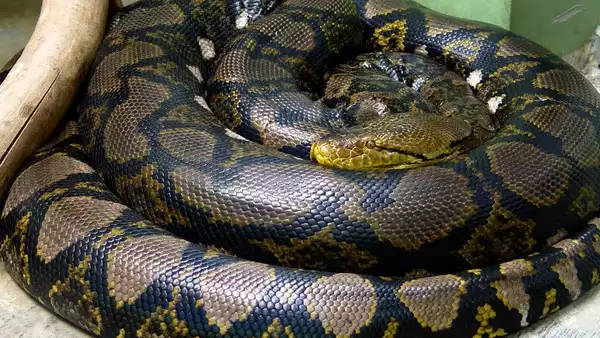
Even the green anaconda is among the largest, but the world’s longest snake is the reticulated python and it weighs over 33 feet.
The constrictors can break large mammals in half due to the fact that they are extremely powerful, and the muscular strength of the snakes’ bodies can overpower animals whose dimensions will be at least double their own. Reticulated pythons are good climbers and swimmers and live in dense jungles and marshes and human settlements at times.
- Leatherback Sea Turtle (Dermochelys coriacea) | Size: 8 feet (2.4 meters) long | Weight: over 2,000 pounds (900 kg) | Habitat: Everywhere in the world, in oceans, temperate to tropical sea water

The leatherback sea turtle is the biggest of all sea turtles and also unique in the fact that it has a leathery shell unlike the other sea turtles’ hard bony shell. The old salt hands swim open ocean miles and miles and feed on jellyfish primarily. Climate change and plastic pollution destroy leatherback sea turtles, and both are terribly dangerous to them.
- Komodo Dragon (Varanus komodoensis) | Length: 10 feet (3 meters) or more | Weight | over 150 pounds (70 kg) | Habitat: Indonesia (Komodo, Rinca, Flores, and surrounding islands)

Komodo dragon, the largest reptile with largest representation in the entire world, is a giant carnivorous predator with a unique mode of attack. Slays their victims with poisoned saliva and afterward devours them, typically, killing mammals such as deer, water buffaloes, and occasionally other Komodo dragons. The intelligent animals also understand how to distinguish individual human beings from other reptiles.
- Aldabra giant tortoise (Aldabrachelys gigantea) | Size: To 4 feet (1.2 meters) in length| Weight: over 550 pounds (250 kg) in body weight| Habitat: Aldabra Atoll (Seychelles)
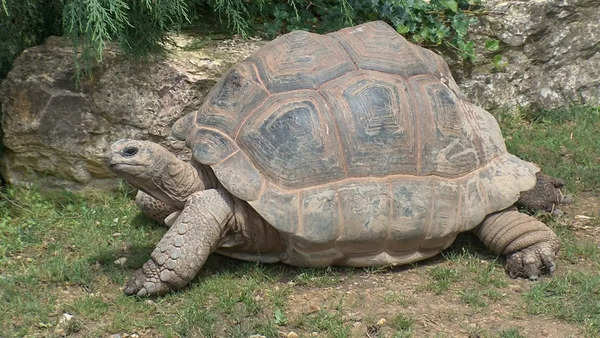
Aldabra tortoise is one of the longest-existing reptiles and has some of its populations that live over 150 years. Herbivorous tortoise species are sluggish but are an integral part to their ecosystem through spreading pasture and seeds among flora. They ensure a region’s vegetation balance remains owing to their presence on Seychelles’ islands, confirming slow-moving animals very much will be part of their ecosystem.
Vital roles of giant reptiles in ecosystem balance
Interesting not because they are giant in size, the giant reptiles are also significant because of the large roles that they play in order to balance their environments. Being predators, they keep their prey species and thus the ecosystem at bay. They also possess huge seed dispersal, like that of sea turtles and tortoises whose seed dispersal in propagating their species is every time they migrate. The reptiles possess influences within their environment so small that they cannot be found but would get destroyed if they tried to get broken. These creatures, however, are now facing threats from human beings and therefore need more protection.
Also Read | Discover the fascinating history and culture of the Wodaabe tribe – nomadic beauty, cattle wealth, timeless customs and more











